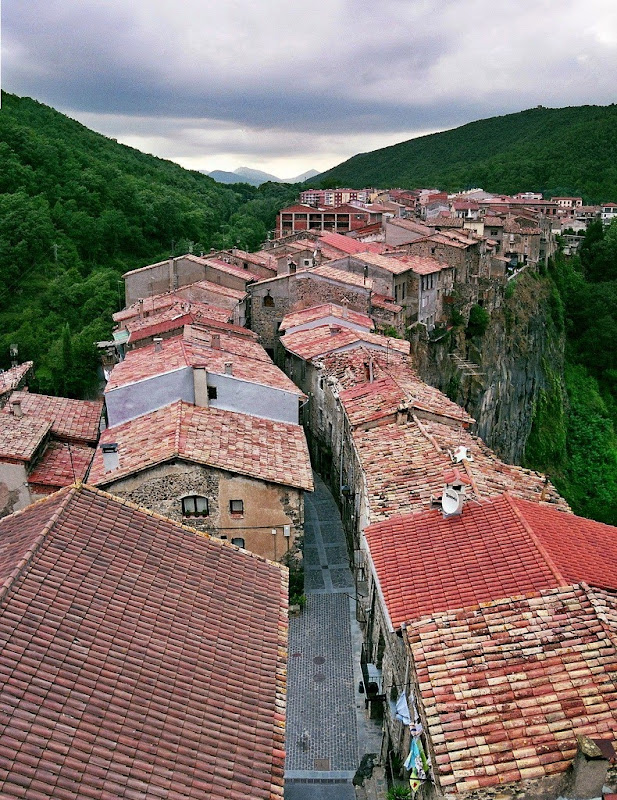Castellfollit de la Roca is one of the most picturesque villages in the autonomous community of Catalonia, in Spain. The village is situated on a narrow strip of basalt rock, barely two houses wide at places, that rises to a height of 50 meters and stretches for a kilometer. This small urban area is bordered by the confluence of the Fluvià and Toronell rivers, between which the town's spectacular basalt cliff rises. With an area of less than 1 square km, Castellfollit de la Roca is one of the smallest villages in Spain. The sight of the church and the houses high on the edge of the basalt precipice has become one of the most photographed and the most popular image of this region.
The basalt crag where the town is situated was formed as a result of the erosive action of the rivers Fluvià and Toronell on the remains of the lava flows from the volcanic eruptions which took place thousands of years ago. The lava, once solidified, became basalt, a hard rock which takes on different forms, depending on the cooling, contraction and splitting processes of the lava. The cliff is the result of two lava flows; the first took place 217,000 years ago, and originated in the area of the village of Batet, and has formed slabs. The second, a more recent formation from the volcanoes of Begudà is 192,000 years old, and has formed into prismatic shapes.
Castellfollit de la Roca has its origins in mediaeval times, and consist of squares and dark, narrow streets. The houses are mostly made from volcanic rock. At the end of the cliff lies the Josep Pla viewpoint-square from which one can see a spectacular panorama. The town's strategic location, and its naturally advantageous position for defence can be fully appreciated. On one side of the cliff stands the old church of Sant Salvador, which dates back to the 13th century.
Close to the old town, where the Fluvià and the Toronell meet, lies an area of small allotments, farmed by the townspeople, and separated by stone walls. Along these plots one can take a hike to the Natural Park which offers views not only of the precipice, but also sites of archaeological industry, canals and dykes which divert water to produce hydroelectric energy.
The modern part of the town with swimming pools and leisure activities has became a place of gathering for the town’s young and elderly.
Also see: The Cliffside Town of Tropea

Sources: www.castellfollitdelaroca.org / Spain.info



















